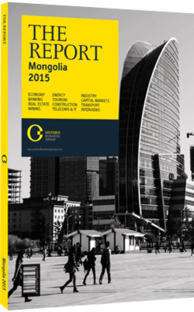Ts. Erdenebileg, CEO, APU Company: Interview

Interview: Ts. Erdenebileg
How has the beverage industry performed in 2014 compared to the previous year?
TS. ERDENEBILEG: The beverage industry in Mongolia has faced a somewhat difficult year in 2014 due to the general downturn in the economy. Sales of all types of beverages are not growing at the same pace that we saw just a few years ago, and the depreciation of the tugrik has put a further dent in profitability, particularly with respect to alcohol, as the excise tax levied on its sale is calculated in dollars but collected in local currency. While the industry is currently in talks with the government about the need to change the manner by which the tax is calculated, progress has yet to be made, which threatens the health of the sector overall and, by extension, the good jobs that it provides for many Mongolians. That said, the long-term outlook for the industry is strong. As the population and its wealth continues to increase so too will demand for beverages.
What trends have you seen in the beverages segment, and where do you see the greatest development opportunities going forward?
ERDENEBILEG: Mongolia is facing similar trends to those seen globally. For instance, as populations have more money to spend, alcohol consumption generally shifts away from spirits to wine and beer. This is something we are also seeing in the local market. Given Mongolia’s history of vodka production, however, local producers are beginning to export their products to other markets such as Russia, the US and Europe, which will be feasible if the country can market itself correctly. In addition, as GDP per capita increases, so too does the consumption of juices and carbonated drinks.
Dairy also poses considerable opportunities, as current consumption of dairy products is less than 70 kg per year in the country, which is much lower than the 150 kg per annum consumed in developed markets. In addition, Mongolia benefits from having a large number of livestock that can be used for milk production. In order for the country to take full advantage of the segment, however, industrial dairy farming and processing must be more effectively developed and many changes need to be made. For instance, better transportation infrastructure needs to be built so that milk can be collected and distributed more efficiently. Breed selection also needs to become more commonplace, and general quality control and safety standards need to be improved. While many of these areas are already being developed, they will take time and support, both in terms of proper government regulations and subsidies as well as investment in facilities and the procurement of dairy cows. With enough feed and adequate shelter, good dairy cows, especially those from places like France and Germany, should produce 25-30 litres of milk per day. Local companies can benefit from the help of foreign investors in these endeavours.
What is the potential of building out the supply chain in the beverage industry?
ERDENEBILEG: As mentioned before, the depreciation of the tugrik has negatively impacted costs including those for production inputs both in terms of raw materials and intermediate goods. Transportation costs, driven by the country’s poor infrastructure and lack of fuel sources, also continue to rise. As such, it is important to source as many materials as possible from the domestic market, and while Mongolia is not an industrial country, there is potential, although limited, to develop the supply chain in beverage production.
Right now, APU imports around 70% of our production inputs, from glass bottles to paper and other materials for packaging to bottle closures. We looked into producing glass and aluminium cans domestically, but found that neither is economically viable, as it is currently cheaper to bring them from China or Russia. That said, closures may be more viable, especially as the market grows, but we have not done a substantial amount of research into the subject of yet. In terms of plastic bottling for water, juices and carbonated drinks, there are some local companies active in this area.
You have reached the limit of premium articles you can view for free.
Choose from the options below to purchase print or digital editions of our Reports. You can also purchase a website subscription giving you unlimited access to all of our Reports online for 12 months.
If you have already purchased this Report or have a website subscription, please login to continue.

